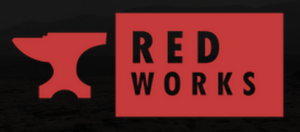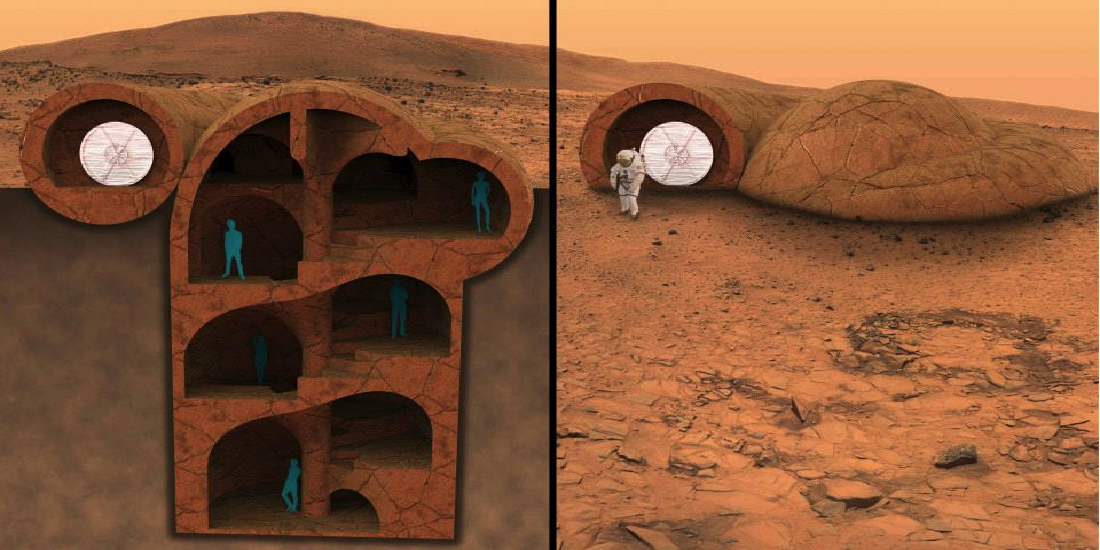Mars Habitat Designers RedWorks Will Test Earth-Based Manufacturing Products in 2016
 Last May NASA launched their Mars 3D Printed Habitat Challenge that asked teams of designers, artists, engineers, rocket scientists and 3D printing technology experts from all over the world to create the first off-world 3D printable settlement. There were hundreds of entries ranging from designs as diverse as ice structures, stone structures and underground habitats. After NASA scientists and engineers narrowed them down to thirty finalists they were invited to present their habitat concepts at the 2015 New York Maker Faire where they eventually settled on the top three designs.
Last May NASA launched their Mars 3D Printed Habitat Challenge that asked teams of designers, artists, engineers, rocket scientists and 3D printing technology experts from all over the world to create the first off-world 3D printable settlement. There were hundreds of entries ranging from designs as diverse as ice structures, stone structures and underground habitats. After NASA scientists and engineers narrowed them down to thirty finalists they were invited to present their habitat concepts at the 2015 New York Maker Faire where they eventually settled on the top three designs.
RedWorks‘ aerospace engineer in residence Keegan Kirkpatrick told me in an interview that the concept for their habitat design was based on early human settlers’ use of natural materials and shapes found in nature like a nautilus shell. While the Lancaster, California space and additive manufacturing company’s design ultimately did not win, it was still one of the more striking and innovative designs in the competition. And the company has committed themselves to continue to develop their technology, not only for the eventual goal of colonizing off-world moons, planets and asteroids, but also to adapt their technology for Earth-based applications.
The company is announcing this week that they are set to begin testing the first of their Mars Habitat Spinoff technologies in early 2016. These spinoff technologies tests are the first phase of RedWorks Made for Mars program that is looking to develop some of the Mars habitats engineering solutions for consumer applications and industrial uses. These newly developed products and technologies are intended to show the general public the many benefits that can evolve from technologies developed for space exploration and offer them space-rated solutions to Earth-based problems.
Among the areas that RedWorks believes their spinoff technologies will have obvious uses will be in the manufacturing of affordable housing solutions as well as encouraging the development of environmentally friendly settlements. The technologies can also be adapted for uses as varied as erosion management, waste and refuse management, renewable energy production, water conservation, urban agriculture and local food production. And because the technology was developed for use in typically inhospitable environments like Mars they will be extremely efficient, durable and self-sustaining.
When the company was founded last year, their mission was a simple one: design the technology that would allow the manufacture of habitats that will help humanity colonize other worlds. The goal is to develop basic settlement infrastructure that is highly adaptable and can be used on multiple types of planets and planetoids like moons or asteroids produced entirely from in-situ resources. The RedWorks habitats will be completely capable of providing self-sustaining the food, air, water and sanitation needs for up to four settlers for up to a year, as well as providing protection from from the elements and environments found on alien worlds.
All of the spinoff technologies from the Made for Mars program are based on lessons that the company learned while they were designing their Mars habitat, living systems and construction techniques. RedWorks is planning demonstrations of their first Made for Mars spinoff product prototypes in early 2016. Additionally the company will continue to explore and expand on their existing Mars Habitat technology to make it available for future colonies on Mars, the Moon or even mining settlements on asteroids. And of course these future developments are expected to lead to their own set of new spin off technologies with Earth-based applications. Discuss this move by RedWorks in the 3D Printed Buildings forum on 3DPB.com.
Subscribe to Our Email Newsletter
Stay up-to-date on all the latest news from the 3D printing industry and receive information and offers from third party vendors.
Print Services
You May Also Like
3D Printing Financials: Prodways Ends 2024 with a Profit
After a tough couple of years, Prodways (EPA: PWG) is starting to bounce back. The French 3D printing company finally made a profit in 2024, improved its operating performance, and...
Blue Origin & Auburn University Use EOS M290 to Study Copper 3D Printing
Blue Origin, the commercial space company built off of investments from Amazon founder Jeff Bezos, has donated two EOS M290 powder bed fusion (PBF) printers to Auburn University’s National Center...
Rocket Lab to Acquire Restructured Laser Communications Provider Mynaric AG
Rocket Lab USA, the Long Beach-based, end-to-end space services company that specializes in producing rockets with additive manufacturing (AM), has announced plans to acquire Mynaric AG, a German provider laser...
3D Printing Financials: Stratasys Ends 2024 with Cost Cuts and Growth Plans
Stratasys (Nasdaq: SSYS) has wrapped up 2024 with stronger margins but a full-year net loss. The polymer 3D printing leader navigated a year of economic headwinds, restructuring efforts, and shifting...





























